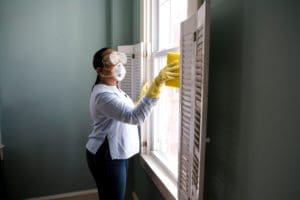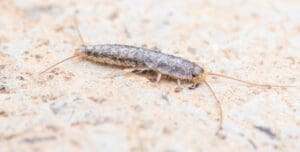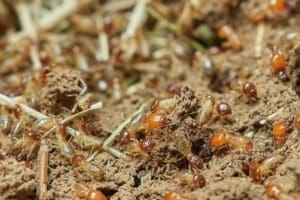

Office Pest Control: The Importance Of IPM In Commercial Buildings
November 8, 2023
Like all multi-unit properties, office buildings are particularly susceptible to pest infestations, which is why we’ve put together this guide. This information is designed to aid office managers in identifying pest activity, dealing with infestations, and choosing the best possible pest control plan for any office building.

What Are The Most Common Office Pests?
The following are a few of the most common office building pests:- Cockroaches: Cockroaches are a prevalent office nuisance due to their rapid reproduction, resilient nature, and potential to spread diseases and trigger allergies. They often hide behind office appliances like copy machines and refrigerators, and they can contaminate any surfaces or food they come into contact with.
- Ants: Ants frequently invade office spaces, and they are especially fond of break rooms or anywhere that food is stored or eaten. Most commonly, offices are invaded by odorous house ants, also known as sugar ants.
- Flies: Flies are attracted to food waste as well as filth like mop buckets, garbage cans, and dirty bathrooms. They reproduce very quickly and they pose significant health risks by contaminating surfaces and spreading various diseases.
- Spiders: Spiders like to hang out in corners and crevices of office buildings and, since they prey on other pests, their presence may be an indication of a larger pest problem.
- Pantry Pests: Insects like moths, beetles, and weevils will infest any food items that are stored in break rooms or employee desks.
- Silverfish: Silverfish pose similar risks to pantry pests, but they will also infest stored office items like paper products and textiles.
- Rodents: rodents like mice and rats will enter office buildings for shelter and food. They are known for their destructive gnawing, disease transmission, and unhygienic habits.
- Bed Bugs: Bed bugs pose a significant threat in office buildings because they spread rapidly from one employee to the next.
Why Is Pest Control Important For Office Buildings?
Pest control is crucial for office buildings to ensure a safe and healthy working environment. Pests not only pose health risks but also jeopardize the structural integrity of the building. They can contaminate food, spread diseases, and trigger allergies among employees, leading to decreased productivity and potential legal liabilities. Moreover, pests like termites and rodents can cause severe damage to the infrastructure, including wooden structures and electrical wiring, potentially leading to safety hazards and costly repairs. Furthermore, the presence of pests can tarnish a company's reputation and credibility, impacting client relationships and business operations. Implementing effective pest control measures helps to prevent infestations, minimize health risks, maintain a professional appearance, and safeguard the overall well-being of employees and visitors. Regular inspections, proper sanitation, and timely pest management interventions are essential for preserving the integrity and reputation of office buildings.What Are The Signs Of An Office Pest Infestation?
Catching an infestation early is a crucial part of pest control. Keep an eye out for these signs of an office pest infestation:- Live Pests: The sighting of live pests, such as cockroaches, ants, or rodents, especially during daylight hours, suggests a significant infestation.
- Insect Debris: Accumulation of insect wings, exoskeletons, or egg casings may point towards an insect infestation.
- Structural Damage: Unexplained damage to furniture, walls, or stored items could indicate the presence of pests like termites, carpenter ants, pantry pests or silverfish.
- Odors: Foul odors, particularly musty or urine-like smells, might suggest the presence of rodents or other pests. Droppings and gnaw marks also indicate rodent activity.
- Health Complaints: Employees experiencing unexplained bites, allergic reactions, or asthma symptoms may signal the existence of bed bugs or other biting insects.
- Nests: The presence of nests or webs in hidden areas could indicate a spider or other pest problem.
What To Do In The Case Of An Office Infestation
In the case of an office building pest infestation, it is crucial to take immediate action. Start by identifying the type of pests present and their entry points. Secure food sources by properly storing them and maintaining cleanliness. Seal off any cracks, crevices, or openings that pests might be using to enter the building. Contact a professional pest control service to conduct a thorough inspection and develop a tailored pest management plan. Implement the recommended treatment, which may include the use of traps, baits, pesticides, or eco-friendly alternatives, depending on the severity of the infestation. Communicate openly with employees about the situation and provide guidelines on maintaining a pest-free environment. Conduct regular follow-ups and inspections to ensure that the infestation is completely eradicated and to prevent future occurrences. Educate staff on preventive measures, such as proper waste management and sanitation practices. Maintaining a proactive approach to pest control is essential for preserving a clean and healthy workspace.Choosing The Right Pest Control Plan For Your Office Building
Choosing the right pest control plan for an office building involves several key steps. Begin by assessing the extent of the infestation and identifying the specific type of pests present. Consider the potential risks associated with different pest control methods, especially in an office environment. Evaluate the scale of the building and the nature of its operations to determine the most effective and least disruptive pest control approach. Prioritize environmentally friendly and non-toxic solutions to minimize health risks to employees and visitors. Research reputable pest control companies with a proven track record of successful office building treatments and positive customer feedback. Request detailed proposals from these providers, outlining their approach, timeline, and cost estimates. Compare these proposals based on their effectiveness, safety measures, and long-term prevention strategies. Finally, choose a pest control plan that aligns with the specific needs and priorities of your office building while ensuring minimal disruption to daily operations. Regular monitoring and open communication with the chosen pest control provider will help to maintain a pest-free environment in the long run.






